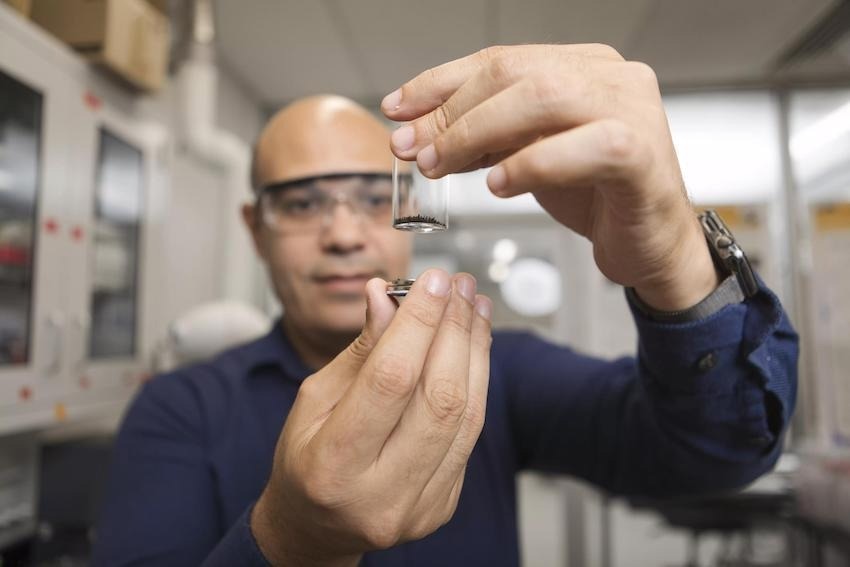Quantum computing can revolutionize the world, thereby allowing huge health and science computation issues to be resolved exponentially faster compared to classic computing. However, quantum computers have a big disadvantage–they can function only in subzero temperatures.

Physicist Ahmed El-Gendy, Ph.D., demonstrates the magnetism of a new material created for quantum computing. Image Credit: The University of Texas at El Paso.
In order to make quantum computers work, we cannot use them at room temperature. That means we will need to cool the computers and cool all the materials, which is very expensive.
Ahmed El-Gendy PhD, Associate Professor, Physics, The University of Texas at El Paso
Now, physicists at The University of Texas at El Paso hope that they have made a quantum leap in that regard. Headed by El-Gendy, the research group has come up with a highly magnetic quantum computing material—100 times more magnetic compared to pure iron—that functions at a regular temperature. The material is explained in the summer issue of the journal Applied Physics Letters.
Magnets are utilized in several modern applications, such as vehicles, smartphones, and solid-state drives—where computers’ data is stored. In quantum computers, magnets are utilized to improve speed, stated Ahmed, but their powerful magnetic properties only work in low temperatures. Quantum computers are presently kept at the cool temperature of -459 °F, right above absolute zero.
Since 2019, the UTEP research group has worked to make completely new magnetic materials for quantum computing. Besides operating in regular temperatures, the team has concentrated on magnets that are not composed of rare Earth materials.
All magnets are currently made from rare Earth materials, and we have a shortage of them. We’re going to face a problem soon of not having these materials to make magnets for any industry. Imagine if we get to that point.
Ahmed El-Gendy Ph.D., Associate Professor, Physics, The University of Texas at El Paso
Following several years of trial and error, the team’s efforts paid off. The final winner was a mixture of materials called graphene and amino ferrocene— and to El-Gendy’s surprise, the material illustrates extremely strong magnetism.
I was doubting its magnetism, but our results show clearly superparamagnetic behavior. No one has prepared a material like this before. I think we could go make a quantum computer at room temperature with this.
Ahmed El-Gendy Ph.D., Associate Professor, Physics, The University of Texas at El Paso
However, the majority of work remains. The material was hard to make, and the team is currently trying to improve the preparation process. Also, they are seeking collaborators who work in quantum computing.
The additional authors of the study are UTEP Postdoctoral Researcher Yohannes Getahun Ph.D, Professor of Physics Felicia Manciu Ph.D., and Chair and Professor of Physics Mark Pederson Ph.D..
Journal Reference:
Getahun, Y. W., et al. (2023) Room temperature colossal superparamagnetic order in aminoferrocene–graphene molecular magnets. Applied Physics Letters. doi.org/10.1063/5.0153212.
Source: https://www.utep.edu/